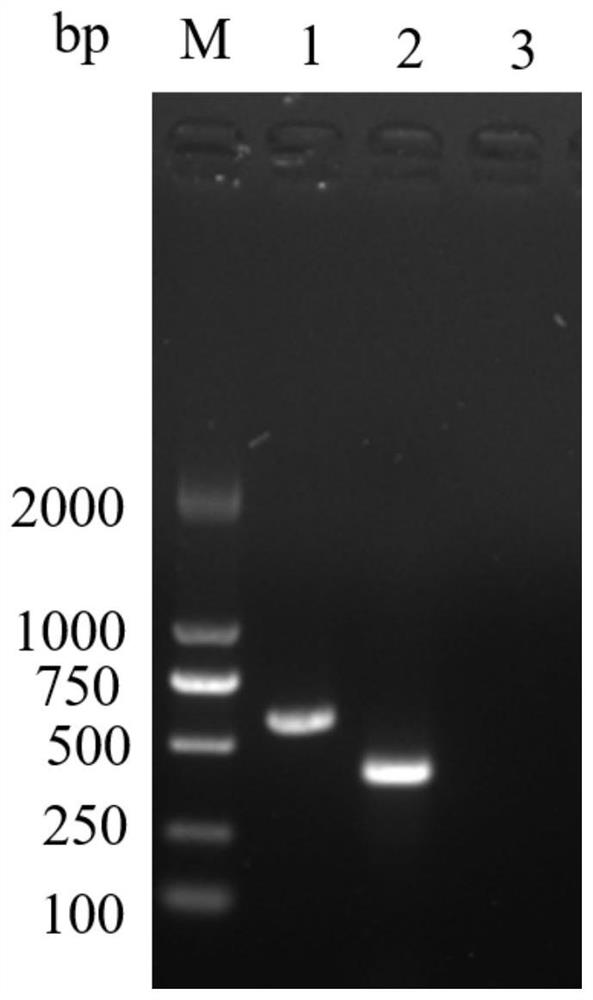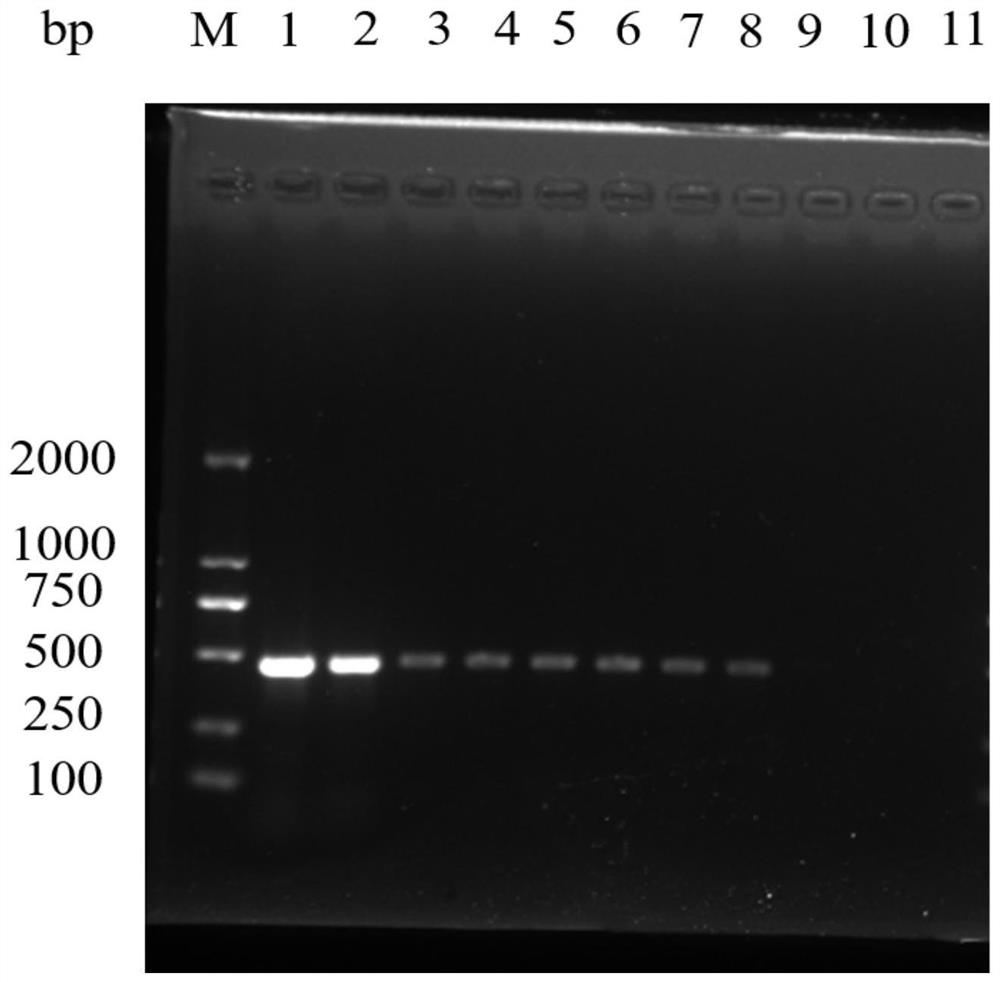Primer for detecting panda-derived babesia as well as kit and detection method thereof
A technology for source Babesia and Babesia, applied in the field of biology, can solve the problems of low sensitivity, unfavorable early diagnosis of giant panda-derived Babesia, and inability to accurately respond, so as to improve sensitivity and accuracy, significantly Sensitivity and practicality, and the effect of improving detection sensitivity
- Summary
- Abstract
- Description
- Claims
- Application Information
AI Technical Summary
Problems solved by technology
Method used
Image
Examples
Embodiment 1
[0039] Embodiment 1 Giant panda source Babesia nested PCR detection kit preparation
[0040] 1. Primer design and synthesis
[0041] According to previous studies, the Babesia was analyzed from the phylogenetic tree ( Figure 7 ), which is considered to be a new species of Babesia, which is significantly different from the main Babesia pathogens prevalent in China, and the existing primers are not suitable for the detection of Babesia from giant pandas. Moreover, the blood samples of giant pandas are more precious, and the amount obtained is less. At the same time, it is necessary to further improve the sensitivity for the detection of the recessive infection of Babesia in giant pandas, so that it can be applied to the detection of Babesia in giant pandas. Therefore, in the hypervariable region of the 18S rRNA sequence of the giant panda-derived Babesia, this application selected the specific sequence of the giant panda-derived Babesia, designed 2 pairs of specific primers fo...
Embodiment 2
[0051] Example 2 Sensitivity Detection
[0052] 1. It is 1ng / μL to measure the nucleic acid concentration of the positive plasmid in Example 1 with a nucleic acid protein analyzer (Nanodrop 2000). The positive plasmid obtained in Example 1 is diluted 10 times, and 2 μL of each dilution plasmid is selected as As a template, a total of 11 concentration gradients (1ng / μL-0.1ag / μL), using the commonly used primers BJ1 / BJ2 for Babesia detection (BJ1: 5'-GTCTTGTAATTGGAATGATGG-3'; BJ2: 5'-TAGTTTATGGTTAGGACTACG-3') Perform conventional PCR amplification. figure 2 It is the amplification result of routine PCR sensitivity detection of Babesia giant panda. A single target band (500bp) can be amplified in lanes 1-8, indicating that the minimum concentration of this detection is 10ag / μL.
[0053] 2. The positive plasmid (nucleic acid concentration is 1ng / μL) was diluted 10 times until it was diluted to the 11th concentration (0.1ag / μL), and 2μL of each dilution plasmid was selected as a...
Embodiment 3
[0055] Embodiment 3 specific detection
[0056] According to literature reports, the blood parasites currently infecting giant pandas include hepatic clusterworms, toxoplasma gondii, and Babesia in the invention. The detection samples in the present invention are mainly giant panda blood samples. In order to eliminate the detection method, hepatic clusterworms and The possibility of Toxoplasma gondii indicates the specificity of this detection method, and the specificity test of this method is hereby carried out.
[0057] Toxoplasma gondii (Genbank: L24381.1) and hepatic clusterworm plasmid (Genbank: AY150067.2) were used to verify the specificity of the primers and kit of the present invention. Select 2 μL of each plasmid as a template, use primers GPB18-F1 and GPB18-R1 for the first round of PCR amplification, use the 10-fold dilution of the first round of PCR product DNA as a template, and use primers GPB18-F2 and GPB18-R2 for amplification. Second round of PCR amplificati...
PUM
 Login to View More
Login to View More Abstract
Description
Claims
Application Information
 Login to View More
Login to View More - R&D Engineer
- R&D Manager
- IP Professional
- Industry Leading Data Capabilities
- Powerful AI technology
- Patent DNA Extraction
Browse by: Latest US Patents, China's latest patents, Technical Efficacy Thesaurus, Application Domain, Technology Topic, Popular Technical Reports.
© 2024 PatSnap. All rights reserved.Legal|Privacy policy|Modern Slavery Act Transparency Statement|Sitemap|About US| Contact US: help@patsnap.com










